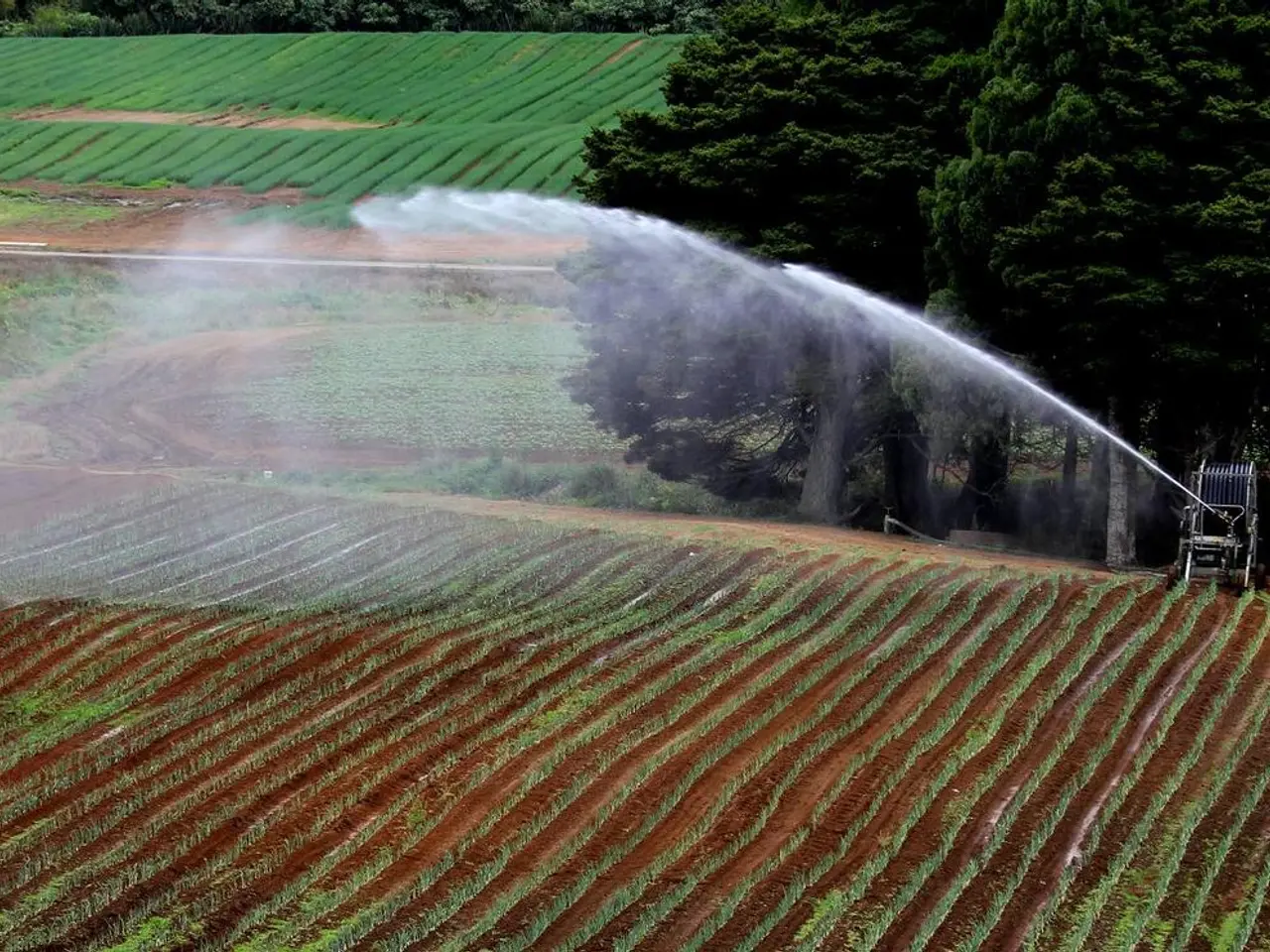Crops in Crimea encountered yield reductions due to weather conditions
In the agricultural heartland of Crimea, the past year has been marked by unusual weather conditions that have taken a toll on crop yields. The Republic of Crimea's Minister of Agriculture, Denis Kratyuk, described the current agricultural season as paradoxical due to the sudden changes in weather.
The past winter was mild, but a cold spring followed, which proved to be a serious challenge for plants in Crimea. Strong frosts in late April and May caused delays in plant growth and development, particularly for grain crops like wheat and barley. The stress caused by these climatic changes resulted in lower than expected yields this year.
The climate in Crimea experienced a drastic change, with extremely hot weather setting in. This heatwave, coupled with the drought, further exacerbated the effects of the spring frosts. The use of modern high-potential varieties has partially compensated for the losses from unfavorable climate factors, but the overall impact has been significant.
According to regional farmer assessments, the recent weather conditions have caused significant reductions in crop yields, potentially reaching up to 25% compared to 2024. Key crops like wheat and barley have been particularly affected, with three waves of frost in Crimea severely damaging grain development.
Official and analyst estimates suggest that wheat production in Crimea and the surrounding southern Russian regions suffered a "severe yield collapse" as part of broader declines in these areas. This agricultural shortfall aligns with a broader pattern of weather-related losses throughout Russia in 2025, leading to lower-than-expected wheat outputs nationwide.
The consequences of these crop losses are far-reaching. Reduced grain availability and potential shortages of key row crops like corn and sunflower in affected areas could lead to increased economic strain on farms experiencing low or failed yields, especially where emergency drought regimes were declared.
Disruptions to regional and global grain markets due to Crimea’s diminished contribution and associated supply chain complexities are also a concern. Potential escalation of food security concerns both locally and in export-dependent markets, given Crimea's exclusion from some official statistics and the complex geopolitical context, including sanctions, further compound the problem.
In summary, severe weather events in 2025 have critically undermined agricultural output in Crimea, with drought and frost jointly causing major crop losses. This exacerbates regional food production vulnerabilities and contributes to broader challenges in Russia’s grain sector and global wheat supply dynamics. Denis Kratyuk did not specify whether any measures are being taken to mitigate the effects of the weather on crops in Crimea.
- The unusual weather conditions experienced in Crimea's agricultural heartland, characterized by warm winters, cold springs, devastating frosts, heatwaves, and drought, are all part of the broad climate change phenomenon that is increasingly affecting environmental science.
- The impact of these weather-related events on crop yields in Crimea, particularly for grains like wheat and barley, can be better understood within the context of weather forecasting and scientific studies on climate change.
- The severe weather events in Crimea highlight the need for more research and development in agricultural science, especially in resilient crop varieties and adaptation strategies, to help mitigate the effects of climate change on crops and ensure food security in various environments.








